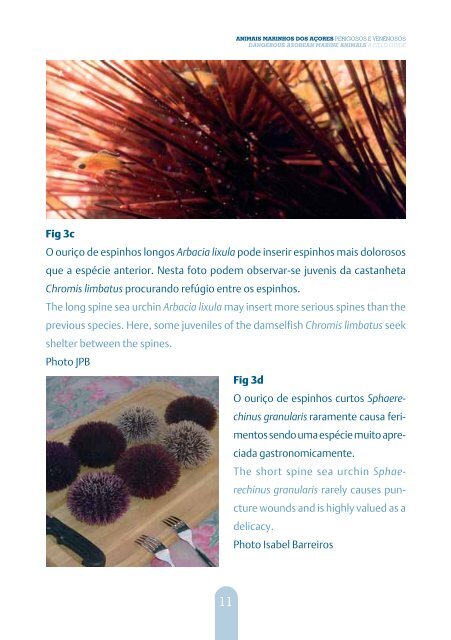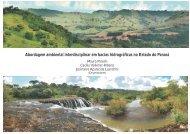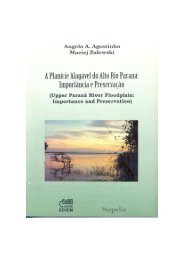You also want an ePaper? Increase the reach of your titles
YUMPU automatically turns print PDFs into web optimized ePapers that Google loves.
VIDAL HADDAD JÚNIOR<br />
JOÃO PEDRO BARREIROS<br />
Os peixes <strong>peçonhentos</strong> mais importantes<br />
pertencem às famílias Dasyatidae<br />
e Myliobatidae (ratões ou ratos do<br />
mar), Trachinidae (peixes-aranha) e<br />
Scorpaenidae (peixes-escorpião). As<br />
principais espécies presentes nos Açores<br />
são: Dasyatis centroura (ratão de ocorrência<br />
duvidosa nos Açores), D. violacea<br />
(ratão, raia-de-espinho pelágica),<br />
D. pastinaca (ratão, rato do mar, uja,<br />
uje), Myliobatis aquila (ratão, arreião)<br />
e Taeniura grabata, sendo estas três<br />
últimas as mais comuns. O único<br />
representante da família Trachinidae é<br />
o peixe-aranha (Echiichthys vipera), de<br />
ocorrência muito ocasional e sem<br />
registos documentados de acidentes,<br />
ao contrário dos numerosos e recorrentes<br />
casos conhecidos em Portugal<br />
continental. Várias espécies da família<br />
Scorpaenidae podem provocar envenenamentos,<br />
como Helicolenus dactylopterus<br />
dactylopterus (boca-negra),<br />
Pontinus kuhlii (bagre, cantarilho, cântaro),<br />
Scorpaena azorica (uma espécie<br />
muito rara descrita em 1958 por Eschmeyer<br />
e da qual se conhecem apenas<br />
2 exemplares tendo o segundo sido<br />
Most important of poisonous fish<br />
include sting rays from families<br />
Dasyatidae and Myliobatidae, Trachinidae<br />
(weevers) and Scorpaenidae<br />
(scorpion-fish). Main species are:<br />
Dasyatis centroura (its occurrence in<br />
Azorean waters is, however, still<br />
doubtful), D. violacea (pelagic sting–ray),<br />
D. pastinaca (common sting–ray),<br />
Myliobatis aquila (eagle ray) and<br />
Taeniura grabata, the last three being<br />
the commonest. The only species of<br />
the family Trachinidae is the lesser<br />
weever (Echiichthys vipera), a very<br />
occasional species and with no accidents<br />
reported in the Azores, opposite<br />
to the very high occurrences of stings<br />
in mainland Portugal. Several species<br />
of the family Scorpaenidae may cause<br />
poisonous stings, such as Helicolenus<br />
dactylopterus dactylopterus (bluemouth),<br />
Pontinus kuhlii (bagre, cantarilho,<br />
cântaro), Scorpaena azorica (a<br />
very rare species described in 1958 by<br />
Eschmeyer and from which only 2<br />
specimens are known, the second<br />
being collected in the Mediterranean<br />
during the 90’s), Scorpaena laevis (with<br />
12






